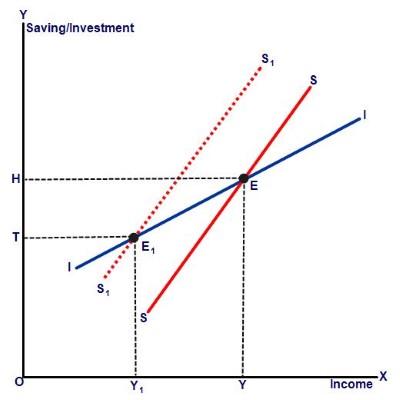Paradox of Thrift is a concept that was first presented by Bernard Mandeville in 1714. It was later popularized by John Maynard Keynes as one of the essential concepts in the study of macroeconomic theories.
The classical economists regarded saving as a virtue. They believed that saving led to good management of economy and hence they encouraged people to save more. To be precise, classical economists regarded that aggregate investment was greatly influenced by aggregate saving because if people start to save more then it would increase national saving, increasing national investment which ultimately led to rise in income of the nation.
On the other hand, Keynes, the father of modern economics, believed that saving was vice and not a virtue. Although saving may be a virtue for an individual, but it is a vice for the public. It is because the expenditure of one person becomes the income of another. When one person saves, the income of another person declines.
The logical explanation behind saving being a vice is that, when aggregate saving increases, aggregate consumption decreases, causing a fall in the effective demand in the economy. Decrease in effective demand leads to over production in the market, and to maintain a balance, firms start producing less. It results in reduced investment. Similarly, decrease in effective demand reduces price as well as profit, discourages investment. Subsequently, there will be decline in employment, declining saving itself.
In this way, saving, which is beneficial at a personal level actually becomes disadvantageous at public and national level. This phenomenon is referred as the “paradox of thrift”.
The figure below provides a clearer description of the concept

In the figure, the point of equilibrium is at E where the saving curve SS and investment curve II intersect each other. The level of income at equilibrium is OY and saving and Investment are equal at OH.
When the aggregate saving increases, the saving curve shifts upwards from SS to S1S1. The new equilibrium point is E1 with OY1 level of income. Saving and investment are equal at point OT. As the level of saving increases, national income decreased from OY to OY1 . Similarly, the volume of saving and investment also declined from OH to OT.
This shows that an effort to save more has led to the decline in income and saving which is known as ‘Paradox of Thrift’.
